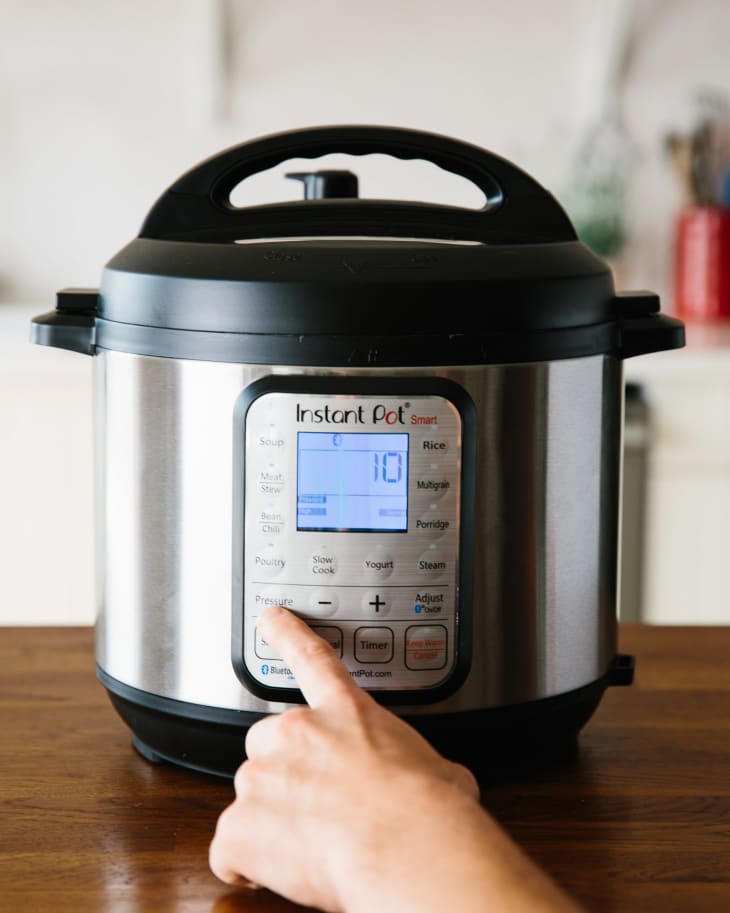When to Use High or Low Pressure on the Instant Pot
Electric pressure cookers can be surprisingly difficult to understand, thanks to the abundance of multifunction buttons and not a lot of explanation about what those buttons do.
Take the pressure settings. On some models, high pressure is the only option. Others offer both a high and low pressure setting. And one in particular even allows you to select a specific psi (pressure).
So what’s a cook to do when using an electric pressure cooker like an Instant Pot?
What Is PSI?
At sea level, a pot of water boils at 212°F. There’s nothing you can do to change that temperature. If a pot of water comes to a boil covered or uncovered, or boils for minutes or hours, the boiling temperature remains at 212°F.
In a pressure cooker or Instant Pot, the liquid boils in an enclosed environment that traps the steam and heat that’s produced during cooking. This closed environment heats liquids to above 212°F. The pressure inside the pot literally changes the usual laws of nature and makes water boil at a higher temperature.
How hot the liquid gets inside a pressure cooker depends on the psi (pounds per square inch) of the pressure-cooker setting. Electric pressure cookers range from 1.5 psi to 12 psi.
Pressure
PSI*
Temperature
High
10 to 12
239°F to 245°F
Low
5.5 to 7
229°F to 233°F
*PSI can vary by manufacturer. Check your owner’s manual for information on specific psi settings.
High vs. Low Pressure
Electric pressure cookers’ high-pressure setting reaches a maximum of 12 to 12.5 psi. This is a lower psi than stovetop pressure cookers, which reach about 15 psi.
At 12 psi, the fibers in vegetables and meat break down quickly, allowing foods to be cooked in a short amount of time. The vast majority of pressure-cooker recipes are created with the high-pressure setting in mind. Think of it as the default setting for pressure cooking. In fact, if your pressure cooker only came with the high pressure as an option, you’re good to go for about 99.9 percent of recipes.
In all the years I’ve used a pressure cooker, I’ve only used the low pressure setting a handful of times. A quick, very non-scientific survey of my pressure-cooking friends told me the same thing. No one used the low-pressure setting on a regular basis.
So I wondered, are we and folks who don’t have the option of a low-pressure setting missing out on something?
It doesn’t appear so.
A low-pressure setting cooks at between 4 psi and 7 psi depending on your make and model. The lower the psi, the lower the temperature. As with traditional cooking, a lower temperature equals a longer cook time. If you’re using a pressure cooker, having a recipe take longer is usually not a benefit.
The Eggception
As with most things in life, there’s an exception to the rule: eggs. Hard-, medium, and soft-cooked eggs come out perfectly when cooked on a low-pressure setting.
Along with eggs, you might see an occasional recipe for vegetables and fish use low pressure. Most of those recipes, however, give an alternative for cooking at high pressure with a shorter cook time.
So while it’s nice to have options, especially if you love eggs, the low-pressure setting might be the least-used button on one of your most-used kitchen appliances.
